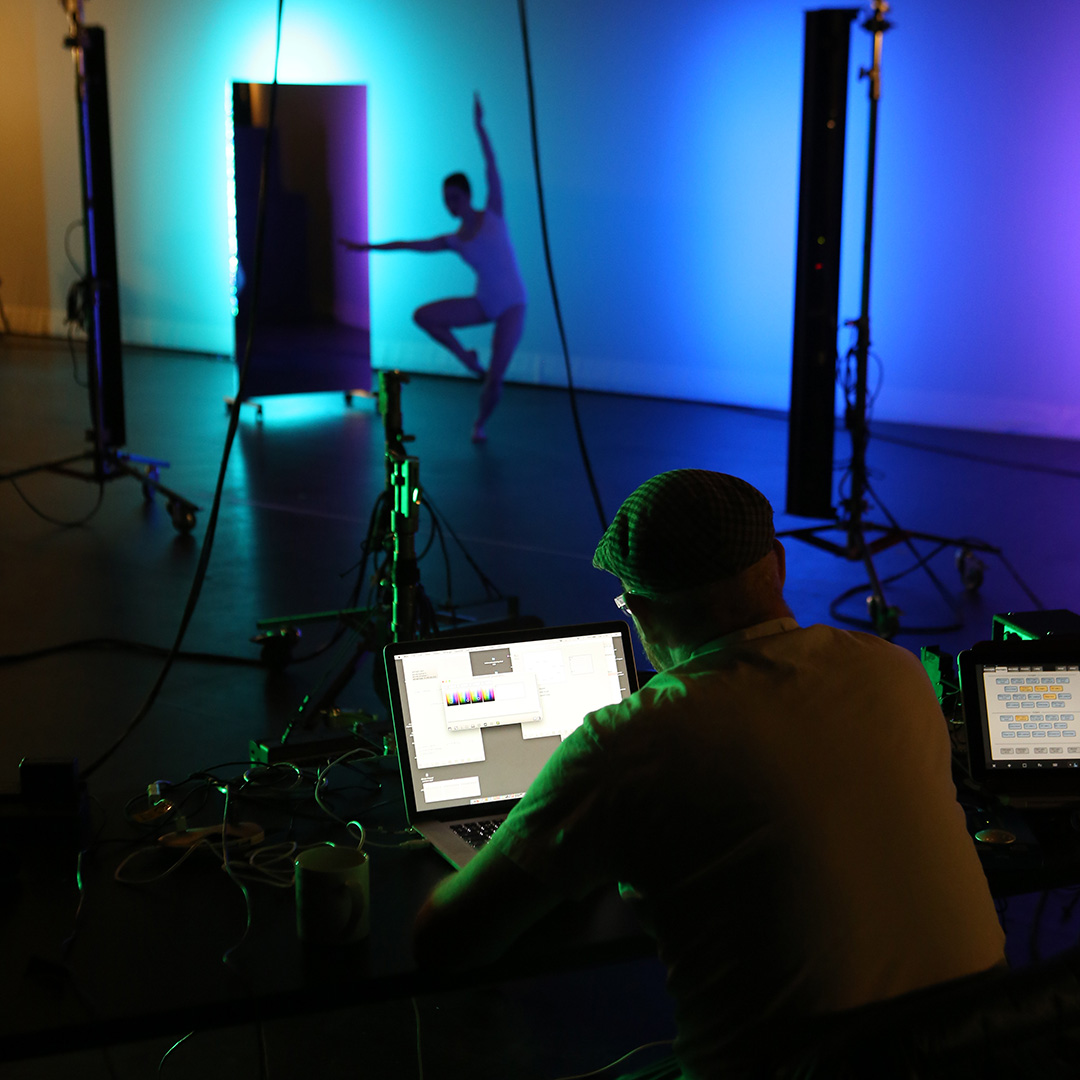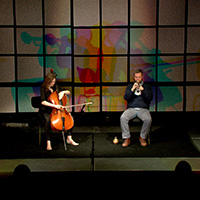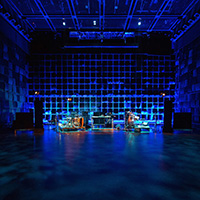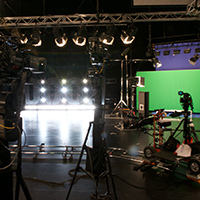Recursive Frame Analysis
by Mark Fell
with choreography made in collaboration
with Brittany Bailey and Burr Johnson Performed by Brittany Bailey and Burr Johnson
Argeo Ascani - EMPAC Curator, Music
Ian Hamelin - Production Coordinator
Daniel A. Swalec - Lighting Supervisor
Eric Lin - Lighting System Engineer
October 08, 2015 | EMPAC Theatre
Returning to EMPAC after his 2013 multi-venue installation and performance, British artist Mark Fell presents Recursive Frame Analysis, a new work for light, sound, and human movement. As with many of Fell’s previous works, Recursive Frame Analysis emphasizes highly formalized aesthetic strategies: arrangements of intensely saturated light, raw synthetic sound, disrupted rhythmic structures, and kinetic systems that urge the audience to their perceptual and cognitive boundaries.
Taking its title from a therapeutic technique (RFA) developed in the 1980s, Recursive Frame Analysis refers to the cognitive patterns around which behavioral relationships and interactions develop; typically these are thought of as “stuck” and therefore also somehow problematic. The frame in the case of this performance could refer to the semiotic or the phenomenological. The work engages with and responds to vocabularies of shapes developed by New York-based choreographer and dancer Brittany Bailey.
About the Artists:
Mark Fell is a multidisciplinary artist based in Sheffield, UK. He is widely known for combining popular music styles such as electronica and techno with more academic approaches to computer-based composition, with a particular emphasis on algorithmic and mathematical systems. As well as recorded works, he produces installation pieces, often using multiple speaker systems. He started his career in the ’90s house and techno scene as one half of electronic duo SND and released The Neurobiology of Moral Decision Making earlier this year on label The Death of Rave.
Brittany Bailey has worked as a dancer/choreographer in NYC since 2008. She graduated from the University of North Carolina School of the Arts in 2008 and went on to train with Merce Cunningham. Bailey has performed with Marina Abramovic, Michael Clark Company, and Robert Wilson. Along with creating performance works for her dance company, Bailey is currently the choreographer on performances with Christopher Knowles, Mark Fell, and a solo dance with visuals by Louise Bourgeois and text by Gary Indiana.
text and logo from EMPAC website | Photos by Kris Qua, courtesy of EMPAC
Error
Photos by Kris Qua, courtesy of EMPAC
During this residency period, the artist wanted to focus on precise control of Martin Atomic 3000 Strobe lights. These entertainment lighting fixtures that were likely to be more familiar on a concert stage, were already a part of the EMPAC fixture inventory. They were also fixtures that the artist had used previously and ones he knew to be available worldwide. It was during these previous uses that Mark had realized that controlling these fixtures using the standardized DMX protocol for control of entertainment lighting fixtures, the response time from his control software (max) through his DMX converter and into the fixture had a bit of a lag to it. This was an issue with this system on multiple occasions prior to the inception of this specific project and was a primary concern in the early phases of development of the work.
During the first meeting about this collaboration between Mark and unknown collaborator (at this point in the process, a choreographer and dancer yet to be named) it was determined that a different control method would be desired. My colleague, Eric Lin devised a system using a solid-state relay to close a control circuit, after we determined that a manufacturer included the opportunity to trigger the strobe to flash simply by shorting two pins on the data input connector.
Error
photos by Daniel A. Swalec


















